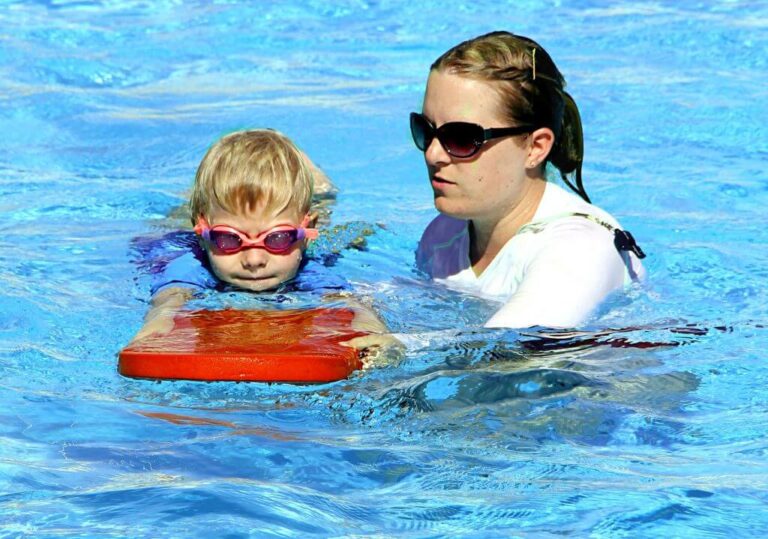Top 10 Best Ways To Prevent Children From Drowning

Whether it’s the sparkle in the gulf or a favorite pool toy floating on the surface, Florida kids are drawn to the water. Whatever the attraction though, families must be concerned about water safety, not only during the summer months, but year-round.
A new Safe Kids study shows that about 1,000 children drown each year, with the majority of drownings occurring between May-August. Additionally, 7,000 children end up in Emergency Centers each year due to drowning scares, and oftentimes these cases take place in open water.
Families also are hearing more about dry drowning or secondary drowning–a delayed reaction to choking on water. Excess liquid causes the lungs to swell and oxygen blood levels can drop, leading to a slowed heart rate and cardiac arrest. In these cases, families should look for warning signs and visit an emergency room immediately if their child develops a cough or experiences chest pain, vomiting, irritability or a drop in energy.
“With the number of infants and children drowning on the rise, the best way to prevent this from happening to your child is to always watch your children when playing in water,” says Jen Arnold, M.D., medical director of the simulation program at Johns Hopkins All Children’s Hospital. “Just like a medical simulation course, parents should rehearse and repeat when it comes to water safety by practicing preventive measures to keep children from accidentally getting into water unattended. Most important, enroll in a CPR course and register your child in swimming and water safety classes at an early age.”
The Florida Suncoast Safe Kids Coalition at Johns Hopkins All Children’s Hospital encourages families to practice water safety and prevent drownings, starting with these 10 tips.
READ ALSO » Top 7 Best Ways To Protect Yourself From Relationship Power Play
You should also read the top 3 ways to Developer maternal bonding.
Content Summary
- Add layers of protection to your home.
- Install door and window alarms in your house.
- Learn CPR.
- Designate a “water watcher” at parties and gatherings.
- Give children all of your attention when they are near water.
- Enroll your child in swimming lessons.
- Don’t rely on swimming aids.
- Teach kids to always swim with an adult.
- Properly store inflatable or portable pools.
- Check your pool drain.
1. Add layers of protection to your home.
Often children can exit the house without an adult knowing, so if a child is out of sight, the pool is the first place that should be checked. Prevent children from wandering into the pool area unsupervised by installing fencing that is at least 4 feet high around the pool with a self-closing, self-latching gate. Also, take a look around to remove pool toys that attract kids into the water or patio furniture they can climb onto to get around fencing and into the pool area.
2. Install door and window alarms in your house.

Place an alarm on every door and window that exits the house. Alarms must be active at all times to provide alerts if someone is entering or exiting the house. Placing locks high out of a child’s reach also can be helpful.
3. Learn CPR.

Learning CPR and finding out where the nearest AED is, can be lifesavers when it comes to drownings. At the very least, safety experts encourage you to learn the basics of hands-only CPR so you can be prepared in case of an emergency.
4. Designate a “water watcher” at parties and gatherings.

Adults can take turns keeping an eye on children playing in the water and even contact the Florida Suncoast Safe Kids Coalition for a free water watcher badge.
5. Give children all of your attention when they are near water.

Adults should stay off their phone and focus on children in the water, but have a phone nearby in case of an emergency to call 9-1-1.
6. Enroll your child in swimming lessons.

Kids should know how to tread water and float, and to only swim in areas designated for swimming.
7. Don’t rely on swimming aids.

READ ALSO » Top 10 Best Ways To Become An Expert In Your Chosen Field
Water wings and pool noodles are fun water toys for kids, but should never take the place of a U.S. Coast Guard-approved personal flotation device.
8. Teach kids to always swim with an adult.

Even older, more experienced swimmers should swim with a friend or someone who can help in case of emergency.
9. Check your pool drain.
If your pool or hot tub has a flat drain grate or single main drain system, install protective measures such as anti-entrapment drain covers and a safety vacuum release system that will automatically release suction and shut down the pump should entrapment occur. Regularly check to make sure drain covers are secure and in good condition.
10. Properly store inflatable or portable pools.
Empty portable pools immediately after use and store upside down and out of the reach of children.
